Economics
Asian economies scramble to appease Trump as the U.S. president ratchets up tariff threats
Published
2 months agoon

PORTSMOUTH, UNITED KINGDOM – OCTOBER 28: The container ship Vung Tau Express sails loaded with shipping containers close to the English coast on October 28, 2024 in Portsmouth, England.
Matt Cardy | Getty Images News | Getty Images
As the specter of Donald Trump’s reciprocal tariffs looms, several Asian economies that enjoy substantial trade surpluses with Washington are scrambling to negotiate favorable solutions with the U.S president to prevent being slapped with higher duties.
Trump said Friday that he would announce reciprocal tariffs — duties that match those levied on U.S. goods by respective countries — as soon as Tuesday, to take effect immediately. Trump did not identify which countries will be hit but indicated it would be a broad effort to help eliminate U.S. trade deficits.
While the details remain unclear, “it is likely that U.S. import tariffs will rise for most emerging Asian economies,” a team of analysts at Barclays said Monday, with the exceptions of Singapore and Hong Kong, with which the U.S. enjoys trade surpluses.
Based on World Trade Organization estimates, most economies in Asia apply higher average tariffs on imports compared with the U.S. as of 2023. India led with a 17% simple average rate on countries with the most-favored-nation status, compared with the U.S. that levies 3.3%. The U.S. enjoys MFN status with most major economies, except Russia.
China topped trade surplus with the U.S. last year at $295.4 billion, followed by Vietnam’s $123.5 billion, Taiwan’s $74 billion, Japan’s $68.5 billion and South Korea’s $66 billion, according to U.S. Census bureau.
“Just because these economies have dodged tariffs for now, [it] doesn’t mean they can breathe easy,” Stefan Angrick, senior economist at Moody’s Analytics told CNBC, stressing that “Washington’s mood could shift and tariffs could still be imposed later.”
These countries, except for Vietnam, were spared in Trump’s opening tariff salvo thanks to their deep security ties with Washington and large investments in the U.S., Angrick said, but “they shouldn’t get too comfortable.”
Vietnam braces for fallout
Vietnam is “undoubtedly one of the most exposed economies” to being a target of Trump’s trade restrictions, due to its large surplus with the U.S. and sizeable Chinese investment in the country, Angrick said.
Garment factory workers working in a factory in Hanoi, Vietnam on May 24, 2019.
Manan Vatsyayana | AFP | Getty Images
Vietnam’s trade surplus with the U.S. soared nearly 18% annually to a record high last year. The country’s simple average tariff rate on MFN partners stood at 9.4%, according to WTO data.
Beverages and tobacco imported into the country face up to 45.5% tariffs on average, while categories such as sugars and confectionery, fruits and vegetables, clothing and transport equipment are subjected to tariffs between 14% and 34%.
Trump, who in 2019 called Vietnam “almost the single worst abuser“ of trade practices, has not made any public remarks about the nation after his re-election in November.
Hanoi has made efforts in recent months to find compromises with Washington on trade. In November, the country vowed to buy more aircraft, liquified natural gas and other products from the U.S.
Vietnamese Prime Minister Pham Minh Chinh last week asked Cabinet members to prepare for the impact of a possible global trade war this year.
Vietnam was a major beneficiary of the trade barriers Trump imposed on Beijing in his first term, which spurred manufacturers to shift production out of China. Consequently, the Southeast Asian nation became one of the largest recipient of foreign direct investment from China.
The U.S. may double its tariffs on Vietnam to 8% if it enforces “full tariff reciprocity,” Michael Wan, senior currency analyst at MUFG Bank said in a note on Monday. That said, he expects a less extreme U.S. stance on the country, with “some sector-specific tariffs” as a more likely possibility.
India readies concessions
India could be the most vulnerable to “reciprocal” tariffs as it imposes duties on U.S. imports that are significantly steeper than U.S. levies on shipments from India, according to estimates by several research firms.
U.S. tariffs on India could rise to above 15% from 3% currently, according to MUFG Bank’s Wen.
New Delhi in its union budget earlier this month reduced tariffs on a range of products including motorcycles, electronic goods, critical minerals and lithium ion batteries. Finance Secretary Tuhin Kanta Pandey said in an interview that “we are signaling that India is not a tariff king.”
Indian Prime Minister Narendra Modi is reportedly prepared to discuss further tariff cuts across a dozen sectors and buying more energy and defense equipment from the U.S. at his meeting with Trump later this week.
Narendra Modi, India’s prime minister, left, and U.S President Donald Trump, arrive for a news conference at Hyderabad House in New Delhi, India, on Tuesday, Feb. 25, 2020.
T. Narayan | Bloomberg | Getty Images
India’s surplus with the U.S., its third-largest trading partner, reached $45.7 billion last year. Notably, the country’s imported agricultural goods were subjected to hefty 39% duties.
During Trump’s first term, he had warm relations with Modi, but during his campaign for re-election, Trump had called India a “very big abuser” with tariffs.
In a phone call with Modi last month, Trump emphasized the importance of India buying more U.S.-made security equipment to reach a “fair bilateral trading relationship,” according to the White House statement.
Some market watchers floated the idea that the two sides may resume discussion on the long-awaited U.S.-India free trade accord. The Joe Biden administration had reportedly rebuffed India’s interest in exploring a free trade agreement, Indian local media reported, citing the country’s commerce and industry minister.
“Such a deal now would require substantial tariff reductions by New Delhi because it has much higher tariff rates than Washington; Trump believes in some degree of reciprocity,” according to Kenneth Juster, distinguished fellow at Council on Foreign Relations.
India could also offer to shift its oil imports from Russia toward the U.S. significantly to align with Trump’s plans of boosting oil and gas exports, said Arpit Chaturvedi, South Asia adviser at Teneo.
Japan as most favored nation
Japan appears to have secured a positive relationship with Trump and could be be shielded from higher tariffs “for now,” analysts said, as Prime Minister Shigeru Ishiba wrapped up a whirlwind visit to Washington over the weekend.
U.S. President Donald Trump gifts Japanese Prime Minister Shigeru Ishiba a book during a joint press conference in the East Room at the White House on February 07, 2025 in Washington, DC.
Andrew Harnik | Getty Images News | Getty Images
Tokyo maintains relatively low tariffs of around 3.7% on countries with MFN status, according to WTO data. That suggests “little scope for substantial increases in tariffs on Japanese goods,” Kyohei Morita, chief Japan economist at Nomura said in a note Monday.
During the summit last week, Japan agreed to import more natural gas from the U.S. and expressed interest in a project to deliver LNG through a pipeline from northern Alaska.
The two leaders also agreed on a compromise that instead of acquiring U.S. Steel, Japan’s Nippon Steel will “invest heavily” in the U.S. firm. Japan will provide technology for U.S. Steel to manufacturer better quality products in the U.S., Ishiba said.
Japan, which has been the largest foreign investor in the U.S. for five straight years, also pledged to expand that investment to $1 trillion, from $783.3 billion in 2023.
“While Japan may not avoid all the effects of future US tariff policies, Tokyo may avoid the targeted treatment seen with countries like Canada, Mexico, and China,” James Brady, vice president of Teneo said in a Saturday note.
“It may even hope for more lenient trade treatment than other major economies, as it appears to enjoy the status of one of Trump’s most favored nations,” Brady said.
China looks ready to talk
Chinese national flags flutter on boats near shipping containers at the Yangshan Port outside Shanghai, China, February 7, 2025.
Go Nakamura | Reuters
Beijing’s tit-for-tat measures — including 15% levy on U.S. coal, liquified natural gas, 10% duties on crude oil, farming equipment, cars and pickup trucks — are believed to be modest and restrained.
The tariff package is estimated to cover $13.9 billion worth of China’s imports from the U.S. in 2024, according to data compiled by Nomura, accounting for 8.5% of China’s total U.S. imports and just 0.5% of China’s total imports.
That is significantly lower than the $50 billion worth of U.S. goods targeted during Trump’s first term, said Tommy Xie, head of Asia macro research at OCBC Bank in a note on Monday.
The “calibrated approach” signaled that “China is opting for a more diversified response,” with non-tariff countermeasures such as export controls and regulatory probes into U.S. corporates, while also “leaving room for further negotiations,” Xie added.
You may like
-


Trump’s approval rating on economy at lowest of presidential career
-


‘He should bring them down’
-
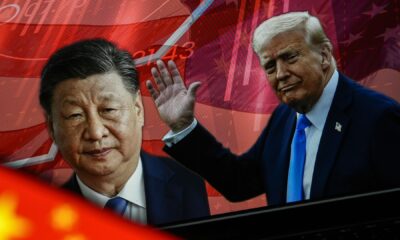

China targets U.S. services and other areas after decrying ‘meaningless’ tariff hikes on goods
-
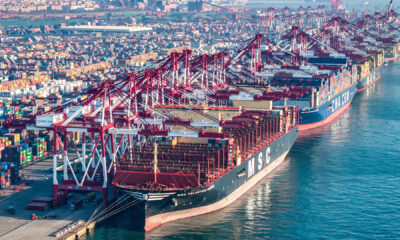

Global trade outlook for 2025 has ‘deteriorated sharply,’ WTO warns
-


Retail sales March 2025:
-


Fed Governor Waller sees tariff inflation as ‘transitory’ in ‘Tush Push’ comparison
Economics
Trump’s approval rating on economy at lowest of presidential career
Published
1 hour agoon
April 19, 2025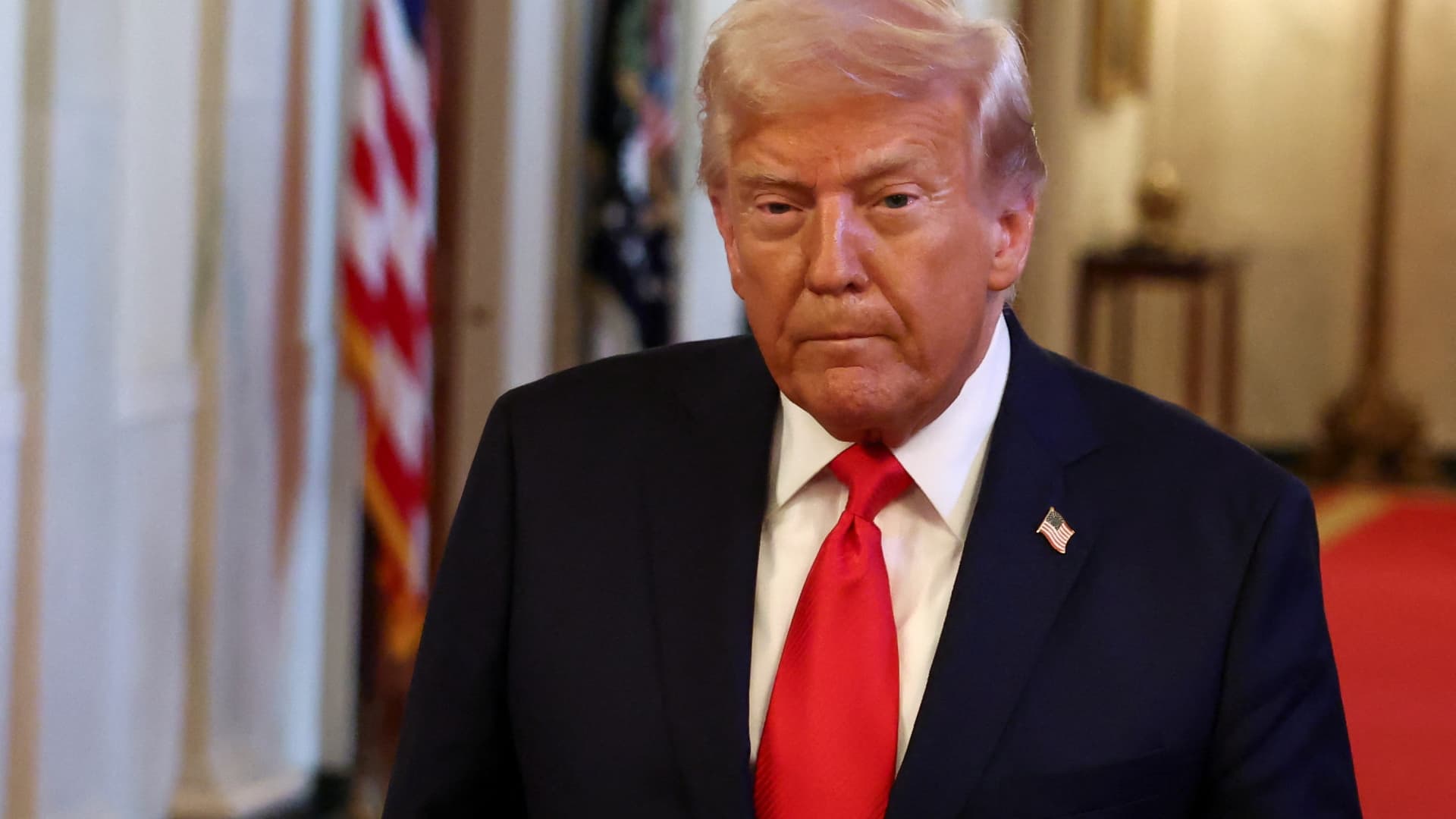
President Donald Trump is registering the worst economic approval numbers of his presidential career amid broad discontent over his handling of tariffs, inflation and government spending, according to the latest CNBC All-America Economic Survey.
The survey found that the boost in economic optimism that accompanied Trump’s reelection has disappeared, with more Americans now believing the economy will get worse than at any time since 2023 and with a sharp turn toward pessimism about the stock market.
The survey of 1,000 Americans across the country showed 44% approving of Trump’s handling of the presidency and 51% disapproving, slightly better than CNBC’s final reading when the president left office in 2020. On the economy, however, the survey showed Trump with 43% approval and 55% disapproval, the first time in any CNBC poll that he has been net negative on the economy while president.
Trump’s Republican base remains solidly behind him, but Democrats, at -90 net economic approval, are 30 points more negative than their average during his first term, and independents are 23 points more negative. Blue collar workers, who were key to the president’s election victory, remain positive on the Trump’s handling of the economy, but their disapproval numbers have shot up by 14 points compared to their average for his first term.
“Donald Trump was reelected specifically to improve the economy, and so far, people are not liking what they’re seeing,” said Jay Campbell, partner with Hart Associates, the Democratic pollster on the survey.
The poll was conducted April 9 through 13th and has a margin of error of +/-3.1%.
The results show that Trump has so far been able to convince only his base that his economic policies will be good for the country over time: 49% of the public believe the economy will get worse over the next year, the most pessimistic overall result since 2023. That figure includes 76% of Republicans who see the economy improving. But 83% of Democrats and 54% of independents see the economy getting worse. Among those believing the president’s policies will have a positive impact, 27% say it will take a year or longer. However, 40% of those who are negative about the president’s policies say they are hurting the economy now.
“We’re in a turbulent, kind of maelstrom of change when it comes to how people feel about what’s going to happen next,” said Micah Roberts, managing partner with Public Opinion Strategies, the Republican pollsters for the survey. “The data… suggests more than ever that it’s the negative partisan reaction that’s driving and sustaining discontent and trepidation about what comes next.”
While partisanship is the most significant part of the president’s negative showing, he loses some support among Republicans in key areas like tariffs and inflation, and has seen a notable deterioration among independents.
Tariffs look to be a substantial part of the overall public’s discontent. Americans disapprove of across-the-board tariffs by a 49 to 35 margin, and majorities believe they are bad for American workers, inflation and the overall economy. Democrats give tariffs a thumbs down by an 83-point margin and independents by 26 points. Republicans approve of the tariffs by a 59-point spread — 20 points below their 79% net approval of the president.
Large majorities of Americans see Canada, Mexico, the EU and Japan as more of an economic opportunity for the United States rather than an economic threat. In fact, all are viewed more favorably than when CNBC asked the question during Trump’s first term. The data suggest the public, including majorities of Republicans, do not embrace the antipathy the president has expressed towards those trading partners. On China, however, the public sees it as a threat by a 44% to 35% margin, substantially worse than when CNBC last asked the question in 2019.
The president’s worst numbers come on his handling of inflation, which the public disapproves of by a 37 to 60% margin, including strong net negatives from Democrats and independents. But at 58%, it’s the lowest net positive approval from Republicans for any of the issues asked about the president. 57% of the public believe we will soon be, or are currently in, a recession, up from just 40% in March 2024. The figure includes 12% who think the recession has already begun.
The public also disapproves of the president’s handling of federal government spending by a 45% to 51% and foreign policy by a 42% to 53% margin.
Trump’s best numbers come on immigration, where his handling of the Southern border is approved by a 53% to 41% margin, and deportation of illegal immigrants is approved 52% to 45%. The president achieved a slight majority of support from independents on deportations and 22% support from Democrats on the Southern border. While still modest, it’s the best-performing issue for Trump among Democrats.
Meanwhile, Americans have turned more negative on the stock market than they’ve been in two years. Some 53% say it’s a bad time to invest, with just 38% saying it’s a good time. The numbers represent a sharp turnaround from the stock market optimism that greeted the president’s election. In fact, the December survey represented the sharpest swing toward market optimism in the survey’s 17-year history and the April survey is the sharpest turn towards pessimism.
The president’s troubles with his approval rating do not appear to be translating for now into significant potential gains for Democrats. Asked about congressional preference, 48% of the public support Democratic control and 46% support Republican control, barely changed from CNBC’s March 2022 survey.
Get Your Ticket to Pro LIVE
Join us at the New York Stock Exchange!
Uncertain markets? Gain an edge with CNBC Pro LIVE, an exclusive, inaugural event at the historic New York Stock Exchange.
In today’s dynamic financial landscape, access to expert insights is paramount. As a CNBC Pro subscriber, we invite you to join us for our first exclusive, in-person CNBC Pro LIVE event at the iconic NYSE on Thursday, June 12.
Join interactive Pro clinics led by our Pros Carter Worth, Dan Niles and Dan Ives, with a special edition of Pro Talks with Tom Lee. You’ll also get the opportunity to network with CNBC experts, talent and other Pro subscribers during an exciting cocktail hour on the legendary trading floor. Tickets are limited!
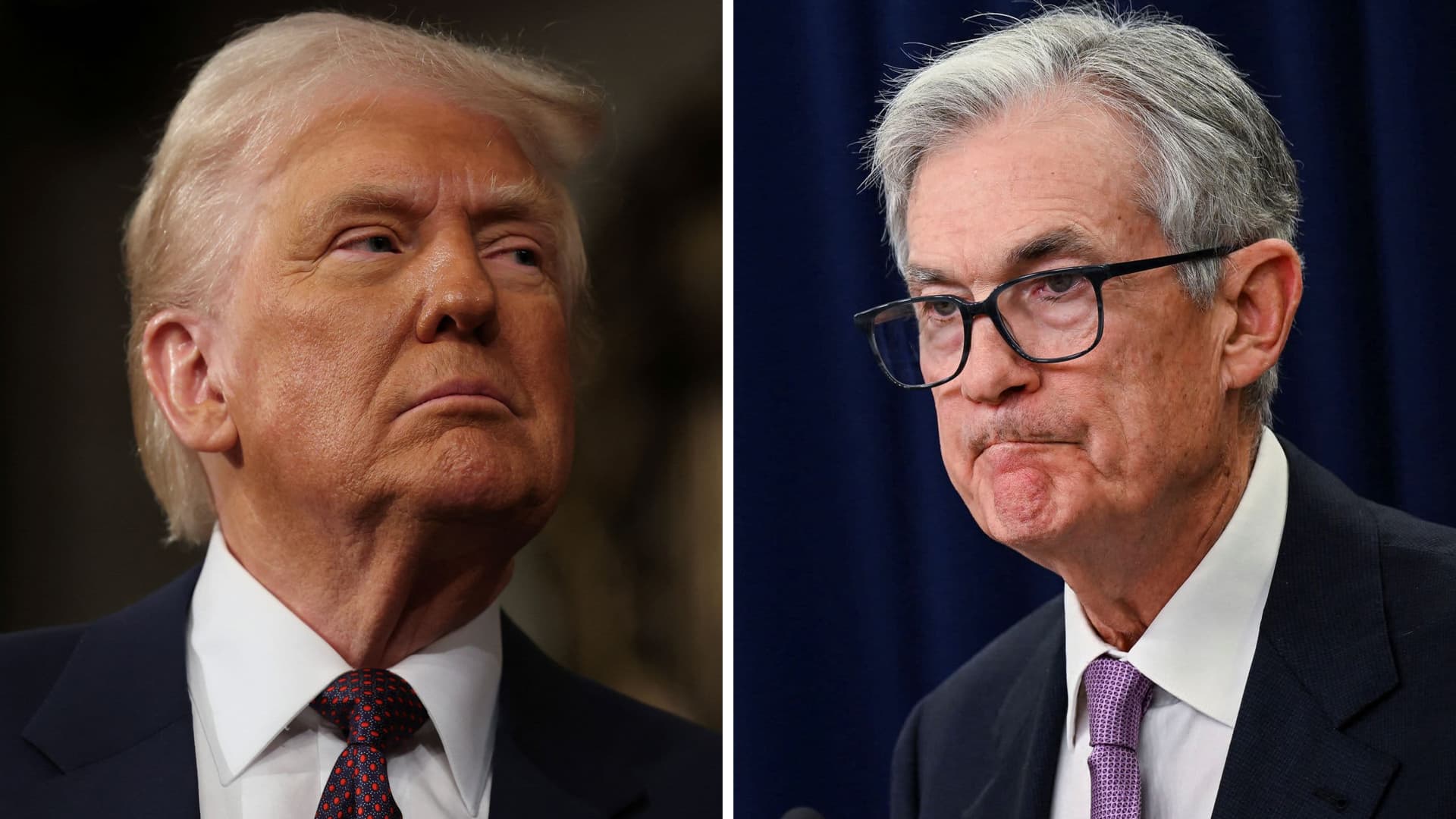
U.S. President Donald Trump and U.S. Federal Reserve Chair Jerome Powell.
Win McNamee | Annabelle Gordon | Reuters
President Donald Trump on Friday lobbed his latest criticism at Federal Reserve Chair Jerome Powell, as the White House’s discontent for the economic policy leader hits a fever pitch.
During a Friday afternoon question-and-answer session with reporters, Trump pointed to examples of prices going down.
“If we had a Fed Chairman that understood what he was doing, interest rates would be coming down, too,” Trump said. “He should bring them down.”
Trump has long argued that the Fed, which sets monetary policy in the U.S., should cut down interest rates. His latest comments come as the White House has ratcheted up its attacks on Powell in recent days.
White House economic adviser Kevin Hassett said Friday that Trump and his team are assessing whether they can remove the Fed chair. Powell has said previously that he cannot be fired under law and intends to serve through the end of his term as chair in May 2026.
“The president and his team will continue to study that matter,” Hassett said at the White House after a reporter questioned if firing Powell “is an option in a way that it wasn’t before,” according to Reuters.
Trump posted on Truth Social on Thursday that “Powell’s termination cannot come fast enough.” His post included the nickname of “Too Late” for Powell, a continuation of Trump’s habit of giving satirical titles to political rivals.
His use of the word “termination” raised questions around if Trump was referring to Powell’s potential removal from his post ahead of schedule. Hassett said on Friday the administration will look at if there’s “new legal analysis” that would allow for Powell’s firing.
Powell appeared to irk Trump after saying Wednesday that the president’s contentious tariff plan could drive up inflation in the near-term and create challenges for the central bank in managing goals of high employment rates and price stability. Powell said Trump’s levies — many of which are currently on pause — are “likely to move us further away from our goals.”
“We may find ourselves in the challenging scenario in which our dual-mandate goals are in tension,” Powell said in prepared remarks before the Economic Club of Chicago. “If that were to occur, we would consider how far the economy is from each goal, and the potentially different time horizons over which those respective gaps would be anticipated to close.”
Powell also said that the Fed was “well positioned to wait for greater clarity before considering any adjustments to our policy stance.”
The Federal Open Market Committee has its borrowing rate currently targeted in a range between 4.25% and 4.5%, where it has sat since December. Fed funds futures are pricing in a more than 90% likelihood that the central bank holds rates steady again at its policy meeting next month, according to CME’s FedWatch tool.
As Trump’s team has scaled up criticisms, some Democrats have gone on defense. Sen. Elizabeth Warren, D-Mass., warned on Thursday that a president firing the Fed chief would be dire for U.S. financial markets.
“Understand this: If Chairman Powell can be fired by the president of the United States, it will crash markets in the United States,” Warren said on CNBC.
Economics
China targets U.S. services and other areas after decrying ‘meaningless’ tariff hikes on goods
Published
3 days agoon
April 17, 2025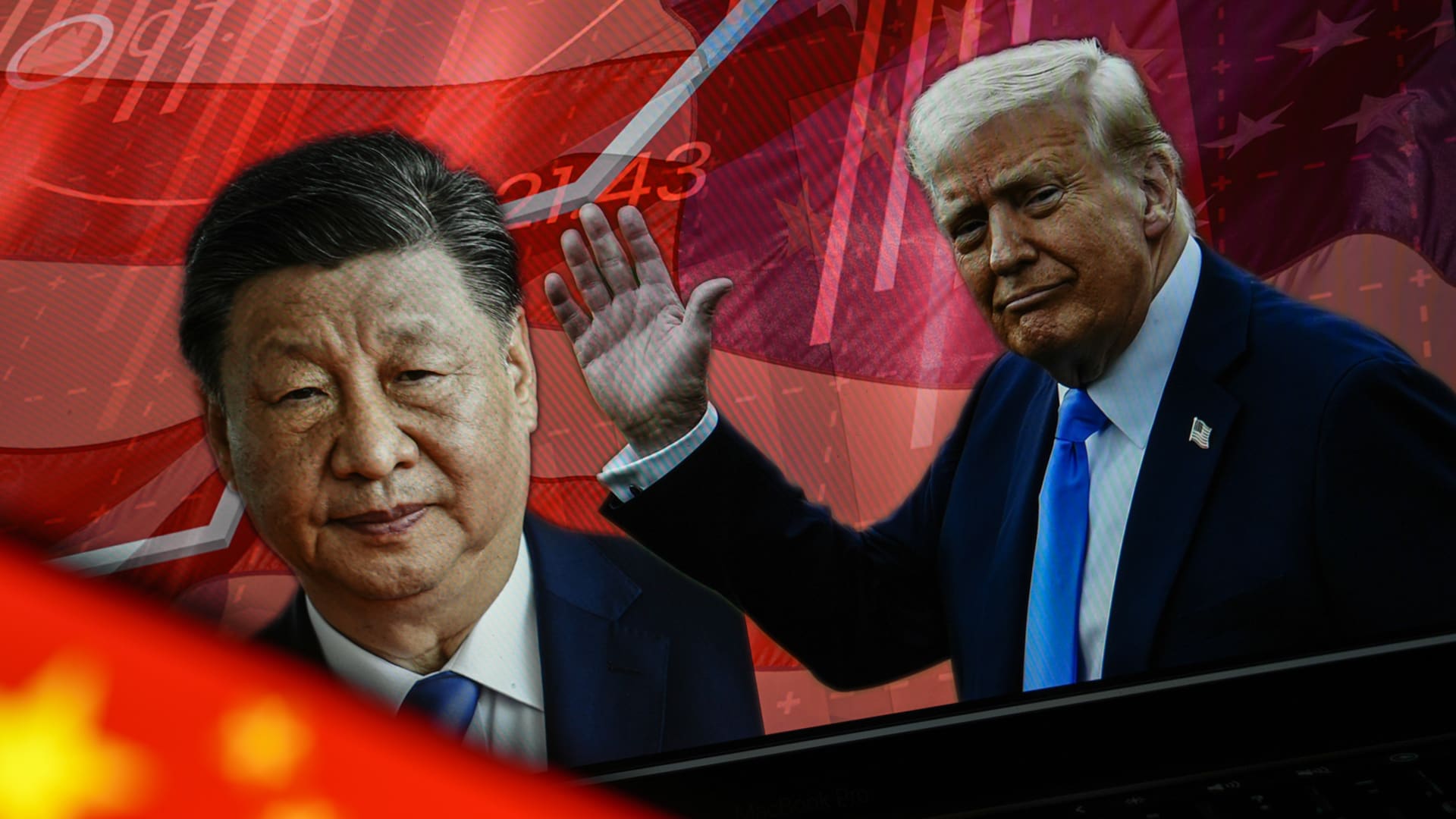
Dilara Irem Sancar | Anadolu | Getty Images
China last week announced it was done retaliating against U.S. President Donald Trump’s tariffs, saying any further increases by the U.S. would be a “joke,” and Beijing would “ignore” them.
Instead of continuing to focus on tariffing goods, however, China has chosen to resort to other measures, including steps targeting the American services sector.
Trump has jacked up U.S. levies on select goods from China by up to 245% after several rounds of tit-for-tat measures with Beijing in recent weeks. Before calling it a “meaningless numbers game,” China last week imposed additional duties on imports from the U.S. of up to 125%.
While the Trump administration has largely focused on pressing ahead on his tariff plans, Beijing has rolled out a series of non-tariff restrictive measures including widening export controls of rare-earth minerals and opening antitrust probes into American companies, such as pharmaceutical giant DuPont and IT major Google.
Before the latest escalation, in February Beijing had put dozens of U.S. businesses on a so-called “unreliable entity” list, which would restrict or ban firms from trading with or investing in China. American firms such as PVH, the parent company of Tommy Hilfiger, and Illumina, a gene-sequencing equipment provider, were among those added to the list.
Its tightening of exports of critical mineral elements will require Chinese companies to secure special licenses for exporting these resources, effectively restricting U.S. access to the key minerals needed for semiconductors, missile-defense systems and solar cells.
In its latest move on Tuesday, Beijing went after Boeing — America’s largest exporter — by ordering Chinese airlines not to take any further deliveries for its jets and requested carriers to halt any purchases of aircraft-related equipment and parts from U.S. companies, according to Bloomberg.
Having deliveries to China cut off will add to the cash-strapped plane maker’s troubles, as it struggles with a lingering quality-control crisis.
In another sign of growing hostilities, Chinese police issued notices for apprehending three people they claimed to have engaged in cyberattacks against China on behalf of the U.S. National Security Agency.
Chinese state media, which published the notice, urged domestic users and companies to avoid using American technology and replace them with domestic alternatives.
“Beijing is clearly signaling to Washington that two can play in this retaliation game and that it has many levers to pull, all creating different levels of pain for U.S. companies,” said Wendy Cutler, vice president at Asia Society Policy Institute.
“With high tariffs and other restrictions in place, the decoupling of the two economies is at full steam,” Cutler said.
Targeting trade in services
China is seen by some as seeking to broaden the trade war to encompass services trade — which covers travel, legal, consulting and financial services — where the U.S. has been running a significant surplus with China for years.

Earlier this month, a social media account affiliated with Chinese state media Xinhua News Agency, suggested Beijing could impose curbs on U.S. legal consultancy firms and consider a probe into U.S. companies’ China operations for the huge “monopoly benefits” they have gained from intellectual-property rights.
China’s imports of U.S. services surged more than 10-fold to $55 billion in 2024 over the past two decades, according to Nomura estimates, driving U.S. services trade surplus with China to $32 billion last year.
Last week, China said it would reduce imports of U.S. films and warned its citizens against traveling or studying in the U.S., in a sign of Beijing’s intent to put pressure on the U.S. entertainment, tourism and education sectors.
“These measures target high-visibility sectors — aviation, media, and education — that resonate politically in the U.S.,” said Jing Qian, managing director at Center for China Analysis.
While they might be low on actual dollar impact given the smaller scale of these sectors, “reputational effects — such as fewer Chinese students or more cautious Chinese employees — could ripple through academia and the tech talent ecosystem,” he added.
Nomura estimates $24 billion could be at stake if Beijing significantly step up restrictions on travel to the U.S.

Subscribe now
Travel dominated U.S. services exports to China, reflecting expenditure by millions of Chinese tourists in the U.S., according to Nomura. Within travel, education-related spending leads at 71%, it estimates, mostly coming from tuition and living expenses for the more than 270,000 Chinese students studying in the U.S.
Entertainment exports, encompassing films, music and television programs, accounted for just 6% of U.S. exports within this sector, the investment firm said, noting that Beijing’s latest move on film imports “carries more symbolic heft than economic bite.”
“We could see deeper decoupling — not only in supply chains, but in people-to-people ties, knowledge exchange, and regulatory frameworks. This may signal a shift from transactional tension to systemic divergence,” said Qian.
Can Beijing get more aggressive?
Analysts largely expect Beijing to continue deploying its arsenal of non-tariff policy tools in an effort to raise its leverage ahead of any potential negotiation with the Trump administration.
“From the Chinese government’s perspective, the U.S. companies’ operations in China are the biggest remaining target for inflicting pain on the U.S .side,” said Gabriel Wildau, managing director at risk advisory firm Teneo.
Apple, Tesla, pharmaceutical and medical device companies are among the businesses that could be targeted as Beijing presses ahead with non-tariff measures, including sanction, regulatory harassment and export controls, Wildau added.
Shoppers and staff are seen inside the Apple Store, with its sleek modern interior design and prominent Apple logo, in Chongqing, China, on Sept. 10, 2024.
Cheng Xin | Getty Images
While a deal may allow both sides to unwind some of the retaliatory measures, hopes for near-term talks between the two leaders are fading fast.
Chinese officials have repeatedly condemned the “unilateral tariffs” imposed by Trump as “bullying” and vowed to “fight to the end.” Still, Beijing has left the door open for negotiations but they must be on “an equal footing.”
On Tuesday, White House press secretary Karoline Leavitt said Trump is open to making a deal with China but Beijing needs to make the first move.
“In the end, only when a country experiences sufficient self-inflicted harm might it consider softening its stance and truly returning to the negotiation table,” said Jianwei Xu, economist at Natixis.

Trump’s approval rating on economy at lowest of presidential career

Investor protection during market volatility through tactical fund

Experts see higher stagflation risks. Here’s what it means for your money

New 2023 K-1 instructions stir the CAMT pot for partnerships and corporations

The Essential Practice of Bank and Credit Card Statement Reconciliation

Are American progressives making themselves sad?
Trending
-
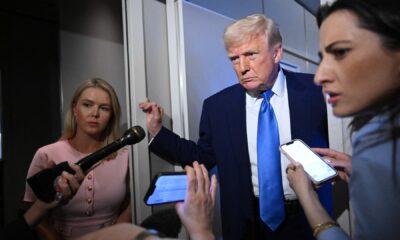
 Personal Finance1 week ago
Personal Finance1 week agoStudent loan changes likely coming under Trump
-

 Personal Finance1 week ago
Personal Finance1 week agoSocial Security updates anti-fraud measures for benefit claims
-

 Accounting1 week ago
Accounting1 week agoTrump’s tariff shift has markets, industry groups panicked
-

 Personal Finance1 week ago
Personal Finance1 week agoSocial Security COLA projected to be lower in 2026. Tariffs may change that
-
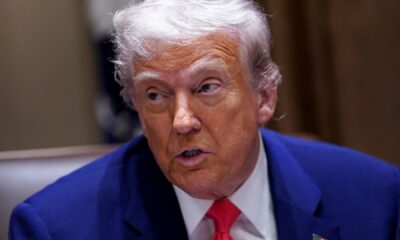
 Economics1 week ago
Economics1 week agoTrump’s triple-digit tariff essentially cuts off most trade with China, says economist
-
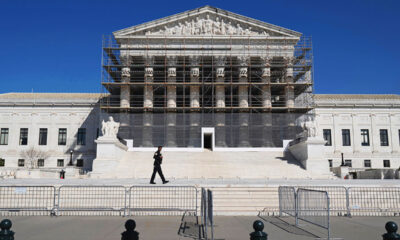
 Economics1 week ago
Economics1 week agoTrump’s tariff blitz faces strong legal challenges
-

 Personal Finance1 week ago
Personal Finance1 week agoMajority of Americans are financially stressed from tariff turmoil: CNBC survey
-
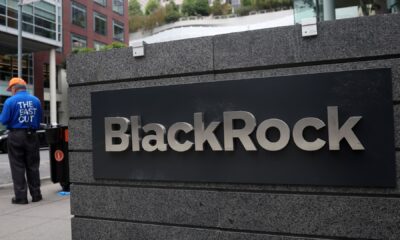
 Finance1 week ago
Finance1 week agoStocks making the biggest moves midday: Frontier Group, JPMorgan, Apple, Stellantis, BlackRock and more
